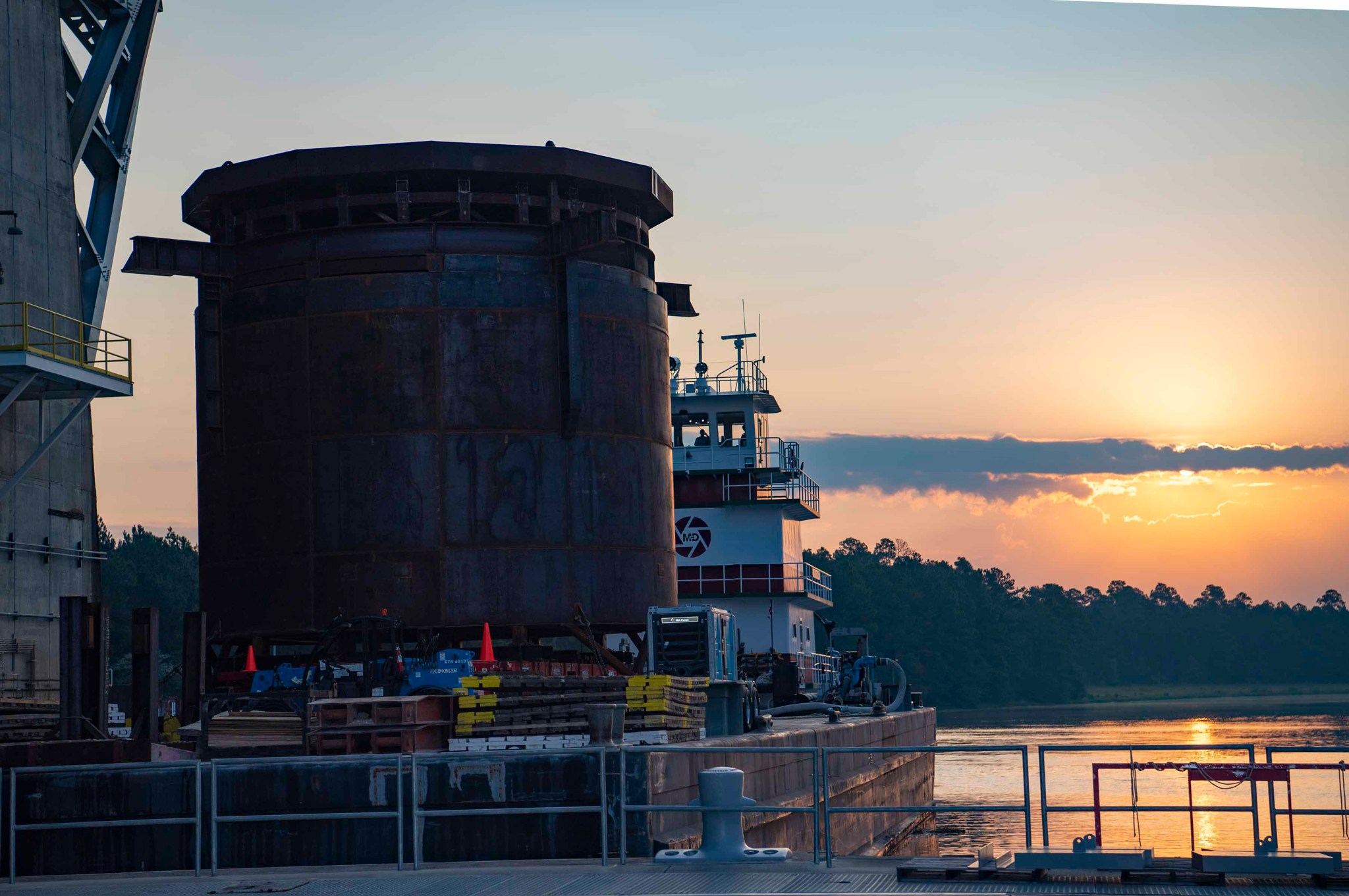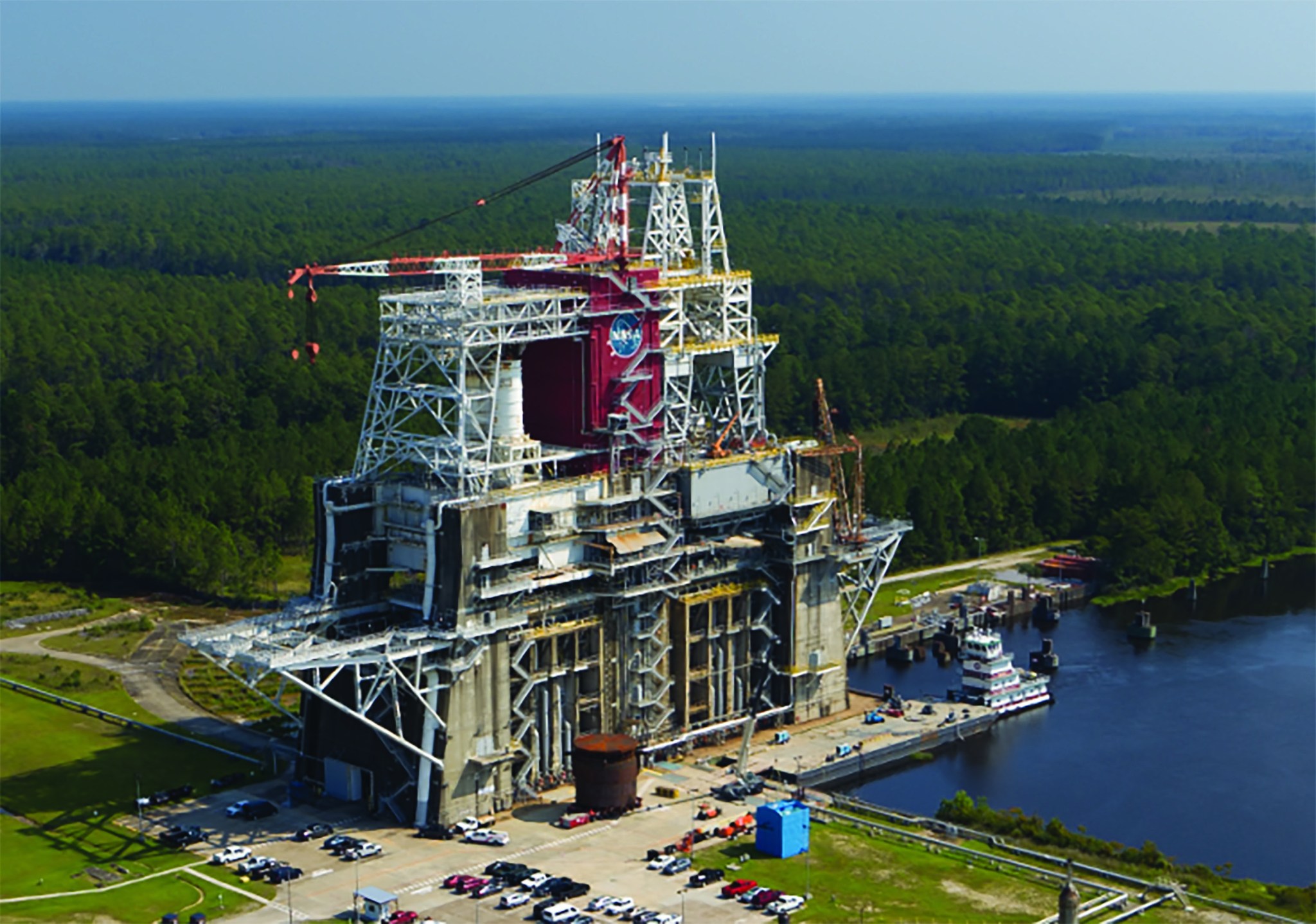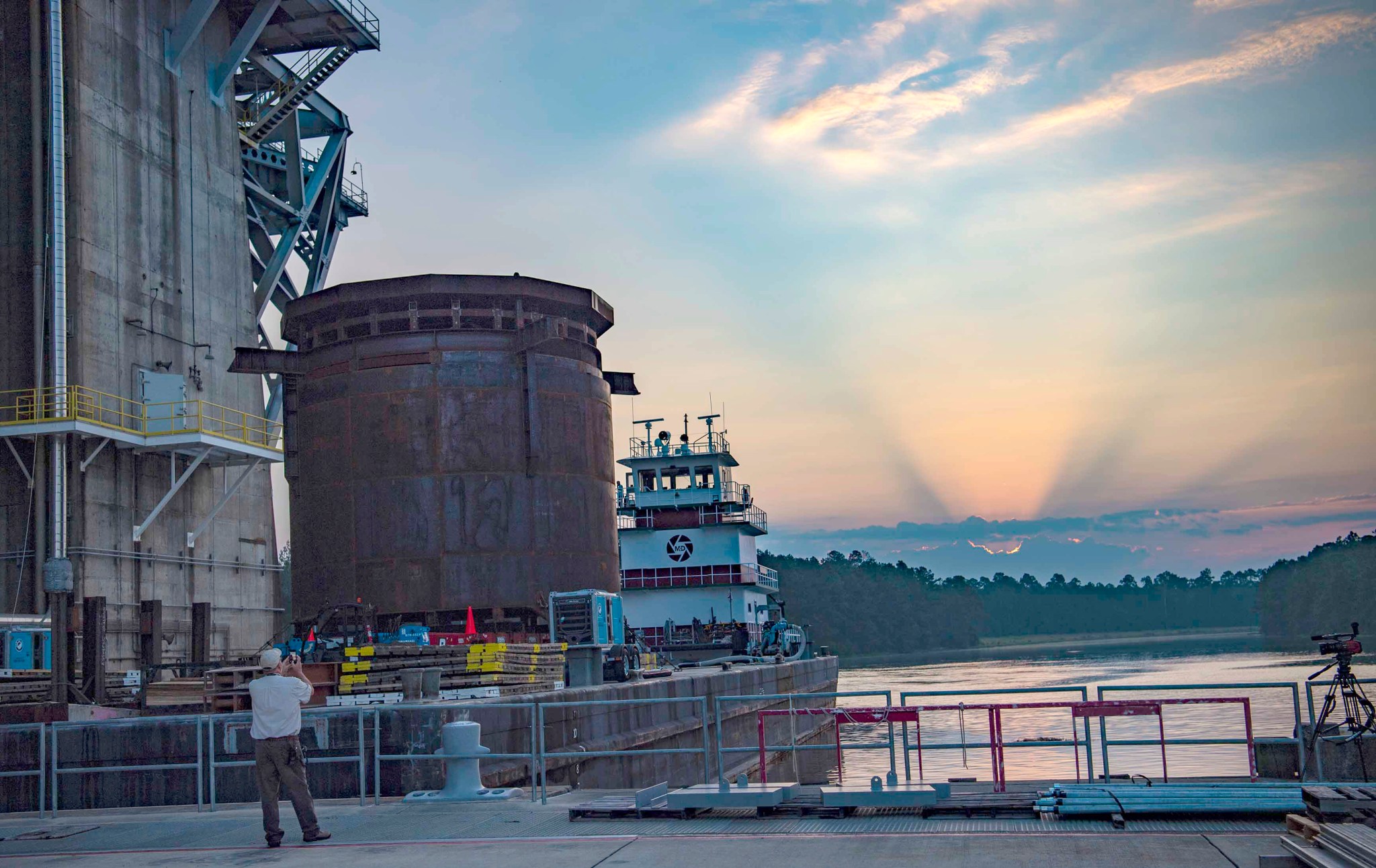A critical component needed for future testing in support of NASA’s Artemis missions to the Moon and beyond recently arrived at the agency’s Stennis Space Center in south Mississippi.
The interstage simulator special test equipment arrived at Stennis on Sept. 21 via barge from NASA’s Michoud Assembly Facility in New Orleans, Louisiana, where it was fabricated. The simulator, 31 feet in diameter and 33 feet tall, will be used during Green Run testing of the new Exploration Upper Stage (EUS). EUS will fly on future Space Launch System (SLS) missions as NASA continues its mission to explore the universe for the benefit of all.

EUS is being built at Michoud as a more powerful second stage to send the Orion spacecraft to deep space. It will replace the interim cryogenic propulsion stage being used on initial Artemis flights and enable NASA to send astronauts and large payloads to the Moon on a single mission.
The new upper stage will be powered by four RL10 engines, generating a combined 97,360 pounds of thrust, compared to the single engine used on the interim stage. That will allow NASA to send 40% more payload to the Moon, 38 metric tons compared to 27 metric tons on initial missions.
EUS is expected to fly on the Artemis IV mission. Prior to that time, it will undergo Green Run testing on the B-2 Test Stand at Stennis, where the SLS core stage also was tested. During Green Run, NASA will conduct a series of tests on the EUS integrated systems to demonstrate it is ready to fly.
The interstage simulator recently delivered to Stennis is essential to enable the series of tests. The Green Run effort will culminate with a hot fire of the four RL10 engines, just as during an actual mission.
The interstage simulator will serve dual purposes. Most importantly, it will function much like the SLS interstage section to protect the lower part of the EUS vehicle from the environment, keeping the electrical and propulsion systems safe while at Stennis. The top portion of the simulator also will serve as a thrust takeout system to absorb the thrust of an EUS hot fire and transfer it back to the test stand.
In the coming months, the Stennis team will perform finishing work to prepare the simulator for installation on the test stand. This will include finishing access platforms and the precision interfaces prior to sandblasting and painting. The final step prior to installation will be installing various piping and tubing, as well as wiring connections needed for Green Run testing.

“As NASA looks to gain a better understanding of the universe, important projects like this need to occur, …” explained Stennis Project Engineer Nick Nugent. “Stennis is on the front lines … with our rocket engine testing, our component testing, and then also our stage testing, like we did with the (SLS) core stage Green Run. It’s an exciting time to be here.”
For information about Stennis Space Center, visit:
C. Lacy Thompson
Stennis Space Center, Bay St. Louis, Miss.
228-363-5499
calvin.l.thompson@nasa.gov

























